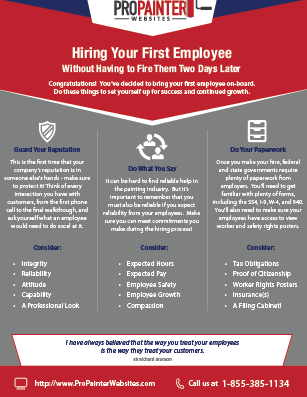Essential Seasonal Aspects Of Commercial Outside Paint: What You Should Understand
Essential Seasonal Aspects Of Commercial Outside Paint: What You Should Understand
Blog Article
Material Writer-Ford Skafte
When you're planning a business outside paint task, seasonal variables can make or break your outcomes. You'll wish to take into consideration how temperature level and moisture influence paint application and drying times. Choosing the appropriate period can guarantee your paint adheres correctly and lasts longer. Yet which periods are really the best for this kind of job? Let's explore the key elements that can influence your project's success.
The Influence of Temperature Level on Paint Application
When you're preparing an industrial outside painting task, the temperature level can dramatically impact exactly how well the paint adheres and dries out.
Preferably, you intend to paint when temperatures vary in between 50 ° F and 85 ° F. If it's as well cool, the paint may not cure properly, bring about issues like peeling or cracking.
On the flip side, if it's also warm, the paint can dry also swiftly, stopping correct attachment and resulting in an uneven surface.
You need to also think about the time of day; early morning or late afternoon supplies cooler temperature levels, which can be much more positive.
Constantly examine the manufacturer's referrals for the certain paint you're utilizing, as they frequently give assistance on the ideal temperature array for ideal results.
Humidity and Its Impact on Drying Times
Temperature isn't the only ecological factor that affects your business exterior painting project; humidity plays a significant function as well. High humidity degrees can reduce drying times drastically, affecting the general high quality of your paint work.
When the air is saturated with wetness, the paint takes longer to cure, which can bring about concerns like inadequate adhesion and a greater risk of mildew growth. If ceiling painter minneapolis on an especially humid day, be prepared for extended delay times in between coats.
It's important to monitor regional climate condition and strategy appropriately. Preferably, aim for moisture degrees between 40% and 70% for optimum drying.
Maintaining additional reading consider mind ensures your task stays on track and delivers a long lasting finish.
Best Seasons for Commercial Exterior Painting Projects
What's the very best time of year for your business external paint tasks?
Spring and early loss are commonly your best bets. Throughout these seasons, temperature levels are light, and moisture levels are frequently reduced, creating perfect problems for paint application and drying out.
Stay clear of summer's intense heat, which can create paint to completely dry too promptly, resulting in bad adhesion and surface. Likewise, wintertime's cold temperature levels can impede proper drying out and treating, risking the durability of your paint job.
Go for days with temperature levels between 50 ° F and 85 ° F for optimum outcomes. Keep in mind to examine the local weather forecast for rain, as wet problems can spoil your task.
Preparation around these variables ensures your paint project runs smoothly and lasts much longer.
Conclusion
To conclude, preparing your commercial outside paint projects around seasonal factors to consider can make a considerable distinction in the result. By organizing work throughout the perfect temperatures and humidity levels, you'll ensure much better bond and drying out times. Bear in mind to keep an eye on local weather report and select the correct time of year-- spring and very early autumn are your best options. Taking these steps will certainly help you attain a sturdy and expert finish that lasts.
